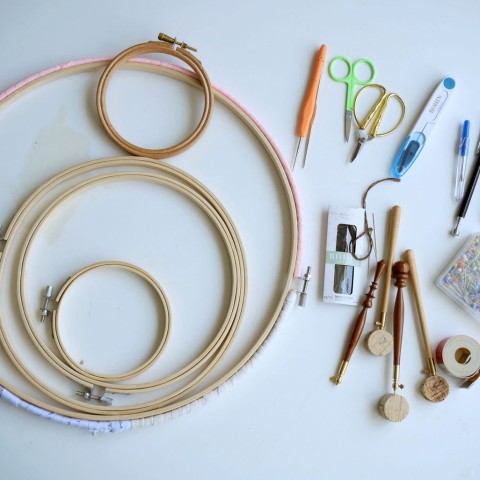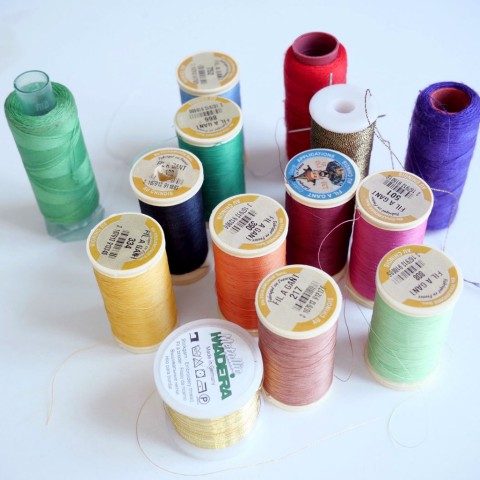Handmade embroidery
Threads of all kinds, mohair wool, beads, natural objects

-
Légende
La Signare primarily uses organic materials such as cotton, wood, and mineral substances like beads for its creations.
Cotton, linen, silk, beads: the origin of the materials.
The majority of the materials we use are primarily derived from organic and biodegradable sources such as cotton, wood, and mineral materials like seed beads, seashells, and ceramics.
La Signare thus employs organic materials that originate from living beings, whether plants or animals (wood, cotton, paper, etc.). Additionally, we incorporate mineral or inorganic materials, including rocks, ceramics, and glass. Plastics, on the other hand, are generally derived from fossil fuels found in the ground, such as petroleum.

The transformation of materials for embroidery
The cotton used in the form of fabric strips comes from Senegal and Burkina Faso, as seen in the Rabal and Faso Dan Fani cushion covers. This cotton is certified as biodegradable and also used in our embroidered table napkins. Most importantly, they carry the OEKO-TEX label which guarantees the absence of undesirable substances for health, especially for the skin.
La Signare extensively employs special pearl threads from the DMC brand for embroidery that endures, feels silky, and produces a high-quality finish without fraying. Our serving boards are made from ash wood, carefully crafted by a master craftsman from Illiers Combray. Additionally, our hooks for Lunéville embroidery are made from cherry wood by a master craftsman from the Jura region.

The Techniques
The technique used combines traditional and modern craftsmanship. Skillful hands weave, sew, embroider, and assemble with precision, giving shape to the patterns.

Gallery of Materials
Embroidery is an art that uses various materials to create diverse patterns and textures. The main materials used include embroidery threads, cotton, linen, silk, wood, and beads.






